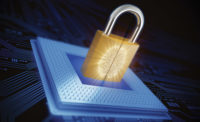
Love it or hate it – or both – e-mail is increasingly the primary method for communicating in today’s digital world, at work and at home. Research shows that introducing e-mail into a company increases printing by 40 percent. Let’s face it, sometimes paper is highly practical. Complex proposals, for example, often require discussions where you need a printed copy that result in physical notes, making the electronic e-mail less valuable than the printed out version.
On the other hand, printing out everything is not likely a good solution. The key to managing e-mail is determining when to keep hard copy and when to keep electronic copy. In some situations, keeping both may be practical. In the case described above, for example, the printed version has value for discussion, and the electronic version has value for creating new versions after the discussion. In either event, following the principles below will improve communication and increase productivity.
5 Tips for Sending E-mail:
• Use the Subject line to clearly describe the topic of your e-mail. This is helpful for the recipient, and for you if you want to find a message you’ve sent.• For a lengthy or complicated e-mail, create the e-mail in your word processing program and then copy to your e-mail. If you have an e-mail glitch during the sending process, you can easily retrieve your message.
• When replying to any e-mail, attach enough of the old message for the recipient to remember the content of the original e-mail, but delete unnecessary information or duplication.
• Avoid sending e-mail attachments whenever possible. Receivers are becoming more reluctant to open attachments due to the increasing prevalence of viruses. In some instances, you may send an attachment, and include the attachment in the body of the e-mail, with the explanation that the attachment will have better formatting.
• Consider using your contact management software (such as ACT!) to send all of your outgoing e-mail. With many programs, you can attach your outgoing e-mail messages to the recipients, and other related contacts, and they will automatically appear in the Out Box of your e-mail program.
5 Tips for Managing Email:
• To avoid an overflowing e-mail In Box, create folders. For example, you might have folders for each of your reports, for each project, for a committee, and for subjects of particular interest.• Whenever you open your incoming e-mail, apply The FAT System. F stands for File, A for Act and T for Toss.
• If you aren’t sure you need it, toss it! Unlike a paper wastebasket, you can always retrieve e-mail from an un-emptied electronic trash or deleted items folder by using the “Find Message†feature available in most e-mail programs.
• Apply the “2-Do Rule†whenever possible. If you can reply in 2 minutes, then do it right away. It will take longer to file it and retrieve it again later, so why not do it now?
• For e-mail that takes more time to reply, either leave them in Inbox or file in an appropriate folder such as “Action†or “Reply.â€
Managing your emails before they get out of hand can save you time and money, not to mention increase your productivity. By following these ten simple tips, you can make your email easier to manage.


